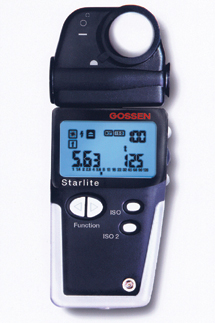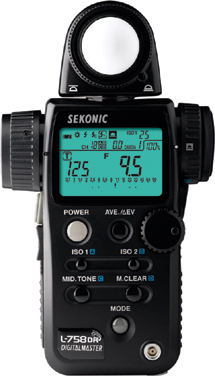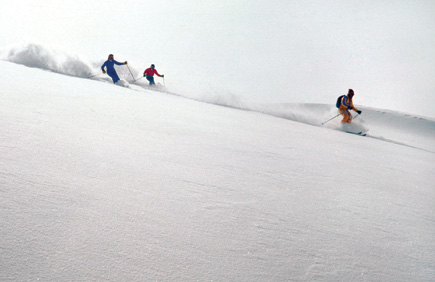Handheld Light Meters; Are They Still Important For Serious Photography?
Newer digital cameras have become so good at taking light measurements that some photographers might question the need for handheld meters. It may seem that the sophisticated multi-segment metering systems, the advanced light measurement capabilities, and the ways these cameras are able to work with different light sources with different color temperatures are making handheld light meters obsolete. Do handheld light meters still belong in photographers' camera bags? The answer is obvious for those who shoot large format or with older metering systems that are close, but not always as accurate as might be required. But what about those who primarily shoot with D-SLRs?
 |
 |
||
|
|
Incident Vs. Reflected
Handheld meters originated in the early days of motion picture film and were
quickly adopted by still photographers. These early light meters were designed
not to measure the light reflected by the subject, but rather the light falling
(incident) on the subject and became known as incident light meters. Incident
light meters are still widely used today both in motion picture and still photography
for the same reason--they give an accurate measure of the light contributed
by each source if the sources are measured separately, or an average reading
of all the sources if they are measured together.
Incident light meters require you to meter from the subject's position,
and that's a big advantage in some types of lighting conditions. As convenient
in use as reflected light meters are, they all, whether handheld or built into
the camera, fail to give accurate exposure information when the scene is dominated
by large areas of very light or very dark values. The proverbial "black
cat in a coal mine" and "polar bear in the snow" are typical
examples. In the first instance a reflected light meter results in overexposure
and in the second in underexposure. This occurs because the scene does not average
out to the mid tone of gray (somewhere between 12 percent and 18 percent gray)
to which the meter is calibrated.
In situations like these, the histogram that higher-end digital cameras display
are of little use. It's possible to change exposure and move the tonal
spike back and forth, but there's no real indication of where it should
actually be in the histogram. Only a handheld incident light meter will provide
an accurate exposure, unless you carry around an 18 percent gray card or have
enough experience in these situations to know how much to bias your camera's
reflected light exposure.
 |
|
|
Flash Readings
Many current handheld meters from Gossen and Sekonic offer another capability
not provided by built-in camera meters (other than those in the Leica R8 and
R9)--the ability to meter studio flash exposure. Handheld flash meters
allow incident and reflected light readings from any brand of flash equipment.
Whether it is single or multi-pop, most modern handheld meters make for very
accurate flash exposure control. They also can be used to read from the main
and fill lights, and calculate lighting ratios for you. For example, the Gossen
Starlite will measure the cumulative exposure of up to nine flashes.
 |
|
|

































